
Limited animation is a process in the overall technique of traditional animation that reuses frames of character animation.

Jonny Quest is a science fiction–adventure media franchise created by Doug Wildey for Hanna-Barbera. It revolves around the titular Jonny Quest, a boy who accompanies his scientist father on extraordinary adventures. The franchise started with a 1964–65 television series of the same name, and has come to include two sequel television series, two television films and three video games. It is currently owned by Warner Bros. after Hanna-Barbera was absorbed by Warner Bros. Animation and succeeded by Cartoon Network Studios.

Space Ghost is a superhero created by Hanna-Barbera Productions in the 1960s for TV network CBS. He was designed by Alex Toth.
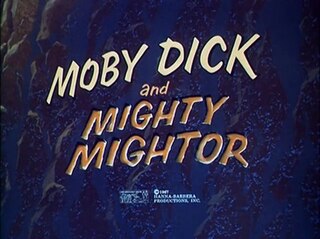
Moby Dick and Mighty Mightor is an American Saturday-morning animated television series produced by Hanna-Barbera Productions that ran on CBS from September 9, 1967 to January 6, 1968, airing in reruns until September 6, 1969. Despite Moby's name coming first, he had only one short per half-hour episode, sandwiched between two with Mightor. The same structure was used the previous season for Frankenstein Jr. and The Impossibles.

Alexander Toth was an American cartoonist active from the 1940s through the 1980s. Toth's work began in the American comic book industry, but he is also known for his animation designs for Hanna-Barbera throughout the 1960s and 1970s. He came to Hanna Barbera in 1964 to do designs for Jonny Quest and his work included Super Friends, Fantastic Four, Space Ghost, Sealab 2020, The Herculoids and Birdman. Toth's work has been resurrected in the late-night, adult-themed spin-offs on Cartoon Network’s late night sister channel Adult Swim: Space Ghost Coast to Coast, Sealab 2021 and Harvey Birdman, Attorney at Law.
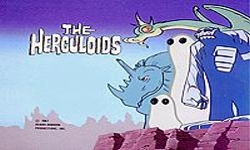
The Herculoids is an American Saturday-morning animated television series, created and designed by Alex Toth, that was produced by Hanna-Barbera Productions. The show debuted on September 9, 1967, on CBS. Hanna-Barbera produced one season for the original airing of the show, although the original 18 episodes were rerun during the 1968–69 television season, with The Herculoids ending its run on September 6, 1969. Eleven new episodes were produced in 1981 as part of the Space Stars show. The plotlines are rooted in science fiction and fantasy.
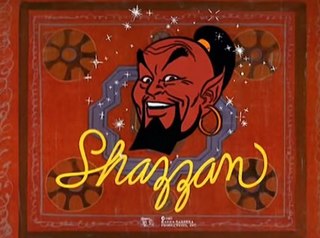
Shazzan is an American animated television series created by Alex Toth and produced by Hanna-Barbera Productions that aired on Saturday mornings on CBS from September 9, 1967, to January 20, 1968, and continued in reruns until September 6, 1969. The series follows the adventures of two 12-year-old siblings, Chuck and Nancy, traveling around a mystical Arabian world, mounted on Kaboobie the flying camel. During their journey they face several dangers, but they are aided by Shazzan, a genie with magical powers. 18 half-hour episodes were produced, made up of two 11-minute segments.

Clutch Cargo is an American animated television series created by cartoonist Clark Haas and produced by Cambria Productions, syndicated beginning on March 9, 1959. The series was notable for its limited animation yet imaginative stories, as well as for being the first widely-known use of Syncro-Vox technology.

Douglas Samuel Wildey was an American cartoonist and comic book artist best known for originally conceptualizing and co-creating the classic 1964 American animated television series Jonny Quest for Hanna-Barbera Productions.

Space Ghost is an American Saturday-morning superhero animated television series produced by Hanna-Barbera Productions, first broadcast on CBS from September 10, 1966, to September 16, 1967, and continued reruns until September 7, 1968. The series was composed of two unrelated segments, Space Ghost and Dino Boy in the Lost Valley. The series was created by Alex Toth and produced and directed by William Hanna and Joseph Barbera. Sometimes, it is alternatively called Space Ghost & Dino Boy to acknowledge the presence of both shows.
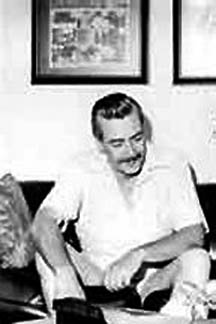
Chester Warren Tufts, best known as Warren Tufts, was an American comic strip and comic book artist-writer best known for his syndicated Western adventure strip Casey Ruggles, which ran from 1949 to 1954.
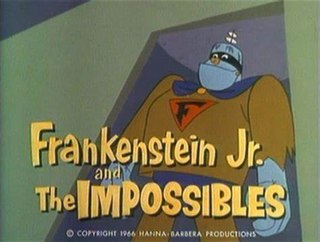
Frankenstein Jr. and The Impossibles is an American animated television series produced by Hanna-Barbera Productions. It premiered on September 10, 1966 on CBS, and ran for two seasons on Saturday mornings.
Clark S. Haas Jr. was an American cartoonist and, from 1957 to 1965, owner of Cambria Studios, which produced the limited animation series Clutch Cargo (1959).
Warner Elvon Leighton was an American film, sound, music, effects and supervising editor. An only child, he married Patricia Relyea in the early 1950s. He had two daughters with Patricia; Denise was born in 1955 and Cynthia was born in 1958. He also had one Grandson, Kyler, born in 1993. Later, he married Margaret (P.J.) Webb on March 3, 1984. During the 1960s, Leighton edited many William Hanna and Joseph Barbera cartoons such as The Flintstones, The Jetsons, Atom Ant, Scooby-Doo, The Secret Squirrel Show, Jonny Quest, Hey There, It's Yogi Bear, and Space Ghost. He also edited a lot of Jack Kirby and Stan Lee cartoons such as Fantastic Four, and Doug Wildey cartoons such as Jonny Quest.
Captain Fathom is an animated television series produced in 1965 by Cambria Studios. Like Cambria's other productions, Clutch Cargo and Space Angel, it was produced in Synchro-Vox. At least 26 30-minute episodes, all in color, were filmed. The episodes could be broken down into five 5-minute segments in cliffhanger format. Renowned comic book artist Alex Toth was the director.
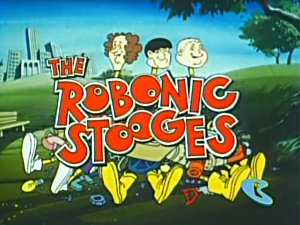
The Robonic Stooges is a Saturday morning animated series featuring the characters of The Three Stooges in new roles as clumsy crime-fighting cyborg superheroes. It was developed by Norman Maurer and produced by Hanna-Barbera Productions from September 10, 1977, to March 18, 1978, on CBS and contained two segments: The Robonic Stooges and Woofer & Wimper, Dog Detectives.

The New Adventures of Jonny Quest is an American animated series produced by Hanna-Barbera Productions, and a continuation of the 1964–65 television series Jonny Quest. It debuted in 1986 as part of The Funtastic World of Hanna-Barbera syndication package, being the seventh and final Hanna-Barbera cartoon of the four and a half weekday/weekend morning line-up. While it is a continuation, the series can be seen as the second season to the original series.

Jonny Quest is an American animated science fiction adventure television series about a boy who accompanies his scientist father on extraordinary adventures. It was produced by Hanna-Barbera Productions for Screen Gems, and was created and designed by the late comic book artist Doug Wildey.
Darrell Tyrone "Big D" McNeil was an American animator, writer, editor, publisher, producer, and actor. He started at the age of eight performing as a background actor and bit player in various movies and television series. He entered the animation industry at the age of 18 with Hanna-Barbera Productions. He was most recently developing and producing a number of animated and live action projects through his own company, Gold Medal Productions.














